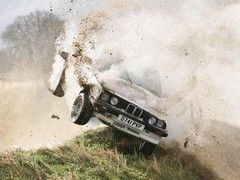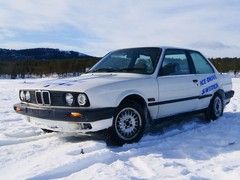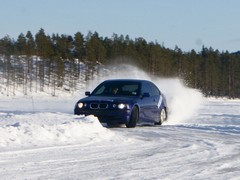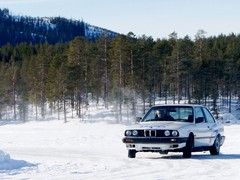PH goes rallying: training, part one
Rally pundit turned competitor Dan Prosser prepares for his debut alongside our own Chris Harris
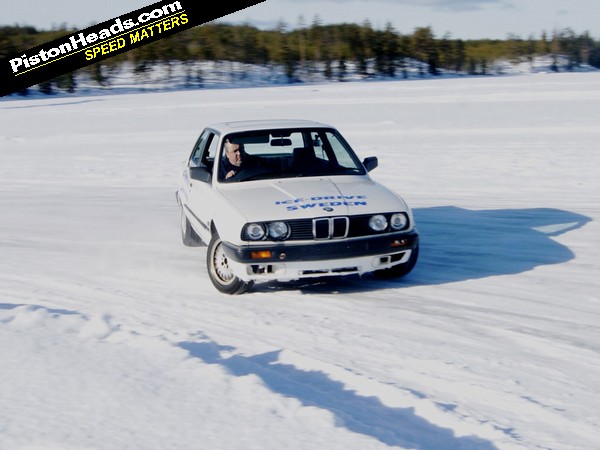
An intriguing idea, but given that neither of us has ever called a pace note and that our collective hands-on experience of the sport amounts to a couple of stage rallies back in 2005, the learning curve does appear to be a treacherous one for us both. I, in particular, have never competed in motorsport beyond a few club kart races as a youngster. Time for some professional intervention.
The priority for me was to get some experience manhandling a rear-wheel drive car on a low-grip surface, and also to learn some of those driving techniques that define this discipline. That I could achieve these objectives without risk of hurting myself or any metalwork - in a standard road-going version of our rally car, no less - made a frozen lake the obvious choice.
Tips from the top
Multiple rally and rallycross champion Pat 'Flying' Flynn runs such a school in Sweden, using a fleet of six-cylinder BMWs, Ford Pumas and much more besides. His lake, close to the Norwegian border, features various courses; a steering pad, an oval with a couple of slaloms and a pair of particularly challenging circuits, one half a mile in length, the other a full mile.
Aside from the obvious benefits, such as the dearth of solid objects to crash into and the relatively modest speeds, a frozen lake is the best training ground for drivers of all experience levels because it requires and promotes a purified technique.
Newcomers to the discipline, myself included, are able to repeat corners endlessly and there's no overstating the importance of this. Imagine trying to learn the fundamentals of rally driving on a stage in which no one corner is repeated. You'd simply fluff every single bend and not make any progress. The lake, however, allows you to practice each corner until you've begun to develop the necessary skills. It doesn't matter that you'll never find an exact replica with the same profile and grip levels in competition - you'll soon have the powers of reading the surface and car control in your armoury.
Dancing on ice
More experienced drivers, meanwhile, are able to refine their skills to an even greater degree. The low-friction nature of the ice means that driving errors and ill-judged inputs are magnified vastly. There's no relying on Pirelli's finest to dig you out of trouble. If you turn into a corner too quickly you'll slide hopelessly into a snow bank. If you get on the power too early you'll miss the apex and shed time. If you're too slow with corrective lock, you'll spin and be laughed at.
The ice allows a driver to really feel
what effect every single minute input has on the car's dynamic behaviour to such as degree that gravel or tarmac could never replicate. Only a pure, refined driving technique will see you lap the outer circuit quickly and efficiently.Pat preaches a very simple formula for negotiating a bend: brake, turn, power. It seems laughably obvious, but those three stages form the very foundations of proper driving technique. Braking, which includes lifting off the throttle, sheds the speed, puts the car's weight on its front wheels and enables the driver to turn into a corner with as little steering input as necessary. Turning in smoothly whilst releasing the brakes, perhaps with a blip of power to send the back end around and keep the front tucked in, comes before patience. It's agonising to sit with your foot hovering over the gas, desperate to stamp on it as if it'll make you faster, but once you've felt the front end wash wide as a result of a premature throttle input a handful of times, you soon realise the virtue of patience. As Jackie Stewart says, you must never get on the power until you're certain you won't have to come off it again.
Back to basics
So it's slow in, fast out. These truisms remain the same regardless of surface, albeit to differing extents. There's no better to place to get your head around this simplest of techniques.
The very best competition drivers go one step beyond their rivals in producing their own grip, rather than relying on the rubber of their tyres. They'll either find it in the surface (perhaps a deep patch of gravel in a braking zone) or they'll shift the weight between the axles to ensure it's where they want it. Such a driver is proactive behind the wheel, dictating the car's behaviour, rather than reacting to whatever it happens to do. He or she will also exert less effort and go faster.
Ice driving is such an enlightening experience that you soon wonder if it isn't the very foundation of a great driver's make up. It's certainly one of them; as discussed, it's the best place in which to refine technique and a driver can cover the equivalent mileage of a full domestic rally season in a single weekend.
Early learning centre
Pat has some rather more radical ideas about the development of a great driver though. "If a child's parent is a smooth driver, that rhythm will be passed on naturally," he reckons. "Equally, if your mum or dad is interested in performance driving, you'll become accustomed to the sensation of a car at its limit from a very early age. Imagine never having felt a car at the limit; how are you ever going to know where that limit is?
"Stick your kid on a trials bike. They won't hurt themselves with all the gear they've got on, and they'll get a feel for traction. The other thing is people in the agricultural trade; a farmer who ploughs a field in the middle of the night doesn't want to get stuck. It's a long walk home. He'll learn how to measure traction perfectly."
I've never ploughed a field. My parents were as interested in driving as I am in bush topiary and I didn't have a motorbike as a kid. Two days on a frozen lake, though, did more to advance my rally driving technique than did eight years on the open road.
Gassing Station | General Gassing | Top of Page | What's New | My Stuff

